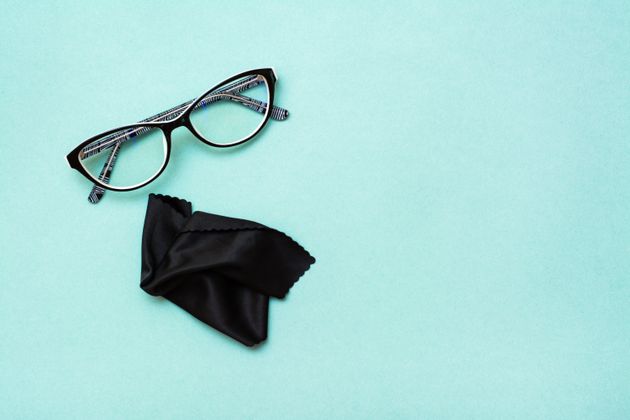Now that government is advising people to wear face coverings in places they’re unable to socially distance, the general population is adjusting to the idea of wearing them. And since glasses are favoured over contacts to prevent the spread, more and more people are wearing glasses. But this can pose a problem?
The warm breath that escapes through the top of a loose-fitting mask inevitably fogs up the lenses of glasses, making them hard to see through.
Fortunately, solutions exist to deal with this. Try the tricks below and see which works best for you. Results will vary based on the shape of your face mask, your bone structure, the temperature and other factors.
Why Glasses Fog Up While Wearing A Face Mask
Plenty of tutorials demonstrate how to sew your own face mask, how to make one without sewing and even how to make one with nothing but a bandana and rubber bands. But not all of these DIY masks fit snugly, and that’s where the problem starts.
(If you want to make a form-fitting face mask, try a pattern like this one from Juliana Sohn.) Or opt for a face mask that’s fitted with a nose wire, which can prevent warm air from traveling up toward your lenses.
Here’s how it happens: Your mask directs your hot, moist breath upward onto the cool lenses. It’s like when your glasses fog up when you come inside after being out in the cold. The water vapour in your breath condenses on the lenses, and surface tension causes the droplets to stay on the glass. Even if you wipe the droplets off your glasses, they’ll continue to form as you breathe.
Let’s take a look at three easy ways to deal with this problem, on multiple fronts.
1. Wash your lenses with soapy water.
A 2011 study in a medical journal found that doctors whose glasses fogged up under surgical masks were able to solve the problem with a soapy pre-surgery wash.
“Immediately before wearing a face mask, wash the spectacles with soapy water and shake off the excess. Then, let the spectacles air dry or gently dry off the lenses with a soft tissue before putting them back on. Now the spectacle lenses should not mist up when the face mask is worn,” said the study in the Annals of The Royal College of Surgeons of England.

Remember how we talked about surface tension causing droplets to stick to your lenses? Soapy water breaks that surface tension by leaving behind a thin surfactant film, making it more difficult for moisture to condense.
This method likely won’t last all day, but it should be good for a few hours before you rewash your lenses with soap and water.
This trick is similar to one that swimmers use to keep their goggles from fogging up. You could also purchase a commercial anti-fog chemical to spray on your lenses. But soap is a lot more accessible.
2. Fold down the top portion of your mask.
The Tokyo Metropolitan Police Department suggests that if the top of your mask fits loosely, simply fold down the top fourth of the mask before wearing it. This doesn’t apply to masks with a metal nose piece, but it creates extra space for your breath to escape out of your mask before it comes into contact with your glasses.
The only downside is that this method reduces the size of your mask. The edges of a face mask should always fit snugly and cover all of your nose and mouth, so if folding the mask inhibits your safety, try another method. This method (and the next) is demonstrated in the first 30 seconds of this Japanese video from C Channel on YouTube.
3. Attach a folded tissue inside the top of your mask.
Also demonstrated in the video above, you can fold a tissue into a thick rectangle and attach it to the inside of your mask, where it lies atop the bridge of your nose. This helps absorb the moisture from your breath, impeding condensation.
No matter which of these methods you try, remember that the World Health Organization says masks are effective only when they’re used in combination with frequent and proper handwashing. And if you do wear a mask, you must know how to use it and dispose of it properly.
And, of course, follow all of your local protocols and avoid leaving the house unless it’s absolutely necessary.